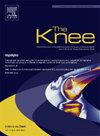原发性全膝关节置换术后延长口服抗生素预防和无pji生存
IF 1.6
4区 医学
Q3 ORTHOPEDICS
引用次数: 0
摘要
最近有证据支持原发性全膝关节置换术(TKA)后使用延长口服抗生素(EOA)预防,以减少高危患者假体周围关节感染(PJI)。然而,大部分证据来自单一机构的系列研究,样本量有限。本研究旨在探讨EOA对原发性TKA后患者并发症和无感染生存的影响。方法使用大型国家数据库识别2015年至2022年进行原发性TKA的患者。确定接受7-14天EOA治疗的患者。基于患者合并症的倾向评分匹配用于匹配接受EOA的患者和未接受EOA的患者。创建了三个队列:任意风险、高风险和标准风险。用单因素分析评估90天的并发症,用Kaplan-Meier法和cox回归分析无PJI至2年的生存率。结果我们确定了5701例接受EOA的患者:3628例(64%)有高危合并症,2073例(36%)有标准风险。在第90天PJI的危险没有显著降低(任何风险:HR: 1.65, 95% CI: 0.90-3.04, P = 0.11;高危:HR: 1.37, 95% CI: 0.69 ~ 2.70, P = 0.4;标准危险:人力资源:1.51,95%置信区间CI: 0.53 - -4.26, P = 0.4), 1年(P比;0.07),或2年以上(任何风险:人力资源:1.42,95%置信区间CI: 0.98 - -2.05, P = 0.065;高危:HR: 1.14, 95% CI: 0.76-1.73, P = 0.5;标准风险:HR: 1.51, 95% CI: 0.76-2.98, P = 0.2)。讨论:在高危或标准风险患者的原发性TKA后的任何测量时间点,oa预防与改善无pji生存无关。鉴于观察到EOA的广泛使用,我们的研究强调需要进一步调查,以确定哪些特定人群可能从EOA预防中受益。本文章由计算机程序翻译,如有差异,请以英文原文为准。
Extended oral antibiotic prophylaxis and PJI-free survivorship after primary total knee arthroplasty
Introduction
Recent evidence has emerged supporting the use of extended oral antibiotic (EOA) prophylaxis after primary total knee replacement (TKA) to reduce periprosthetic joint infection (PJI) in high-risk patients. However, much of the evidence stems from single-institution series with limited sample sizes. This study aimed to explore the impact of EOA on complications and infection-free survivorship in a large cohort of patients after primary TKA.
Methods
A large national database was used to identify patients undergoing primary TKA from 2015 to 2022. Patients receiving 7–14 days of EOA were identified. Propensity-score matching, based on patient comorbidities, was used to match patients who received EOA and to control patients who did not. Three cohorts were created: any-risk, high-risk, and standard-risk. Complications at 90-days were assessed with univariate analysis and survivorship free of PJI to 2 years was analyzed with the Kaplan-Meier method and cox regression.
Results
We identified 5,701 patients who received EOA: 3,628 (64%) with high-risk comorbidities and 2,073 (36%) standard risk. There were no significant reduction in hazard of PJI at 90-days (any-risk: HR: 1.65, 95% CI: 0.90–3.04, P = 0.11; high-risk: HR: 1.37, 95% CI: 0.69–2.70, P = 0.4; standard-risk: HR: 1.51, 95% CI: 0.53–4.26, P = 0.4), 1 year (P > 0.07), or 2 years (any-risk: HR: 1.42, 95% CI: 0.98–2.05, P = 0.065; high-risk: HR: 1.14, 95% CI: 0.76–1.73, P = 0.5; standard-risk: HR: 1.51, 95% CI: 0.76–2.98, P = 0.2) with EOA administration.
Discussion
EOA prophylaxis was not associated with improved PJI-free survivorship at any measured time point following primary TKA in either high-risk or standard-risk risk patients. Given the observed widespread use of EOA, our study highlights the need for further investigation to delineate what specific populations may benefit from EOA prophylaxis.
求助全文
通过发布文献求助,成功后即可免费获取论文全文。
去求助
来源期刊

Knee
医学-外科
CiteScore
3.80
自引率
5.30%
发文量
171
审稿时长
6 months
期刊介绍:
The Knee is an international journal publishing studies on the clinical treatment and fundamental biomechanical characteristics of this joint. The aim of the journal is to provide a vehicle relevant to surgeons, biomedical engineers, imaging specialists, materials scientists, rehabilitation personnel and all those with an interest in the knee.
The topics covered include, but are not limited to:
• Anatomy, physiology, morphology and biochemistry;
• Biomechanical studies;
• Advances in the development of prosthetic, orthotic and augmentation devices;
• Imaging and diagnostic techniques;
• Pathology;
• Trauma;
• Surgery;
• Rehabilitation.
 求助内容:
求助内容: 应助结果提醒方式:
应助结果提醒方式:


